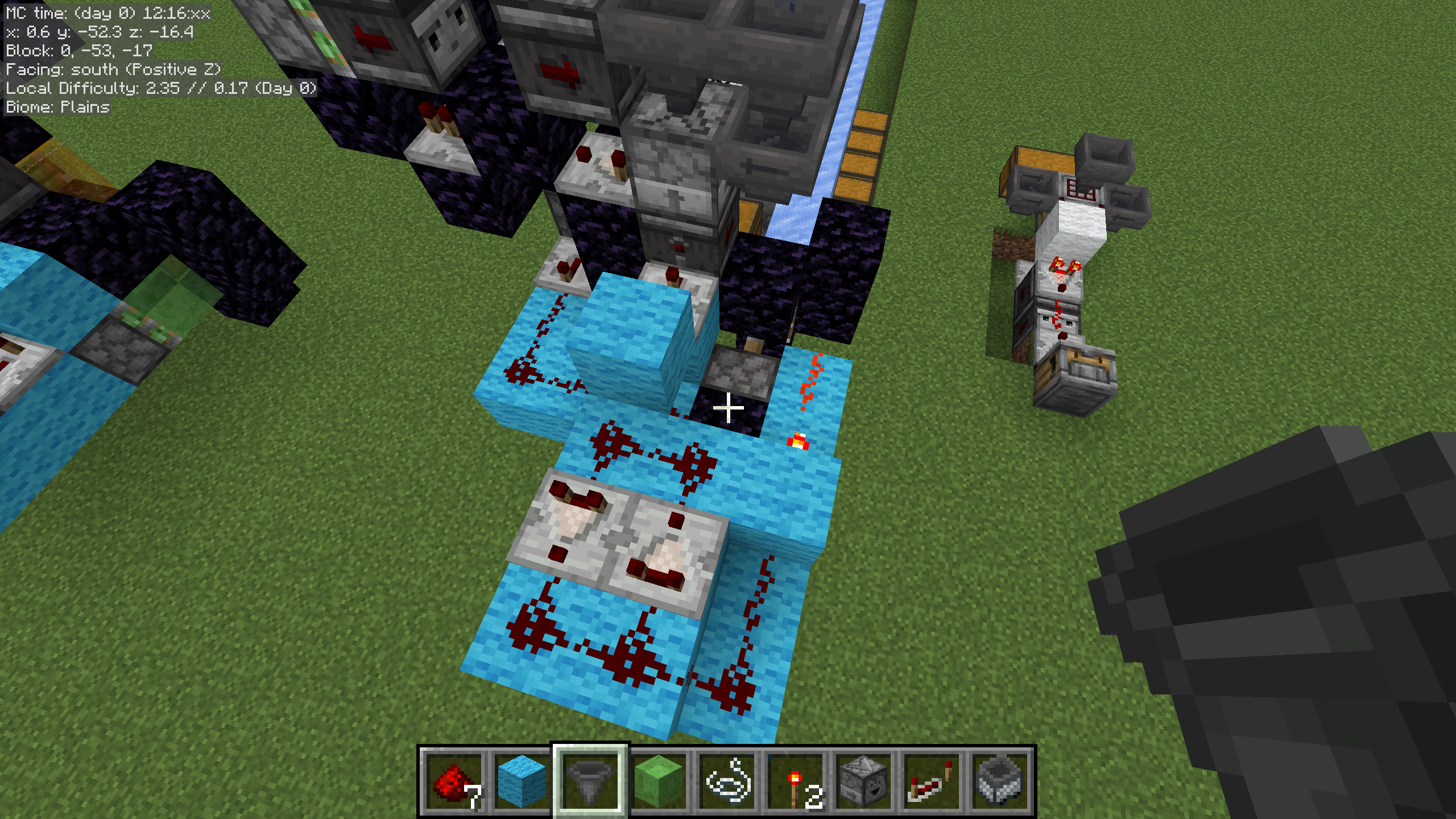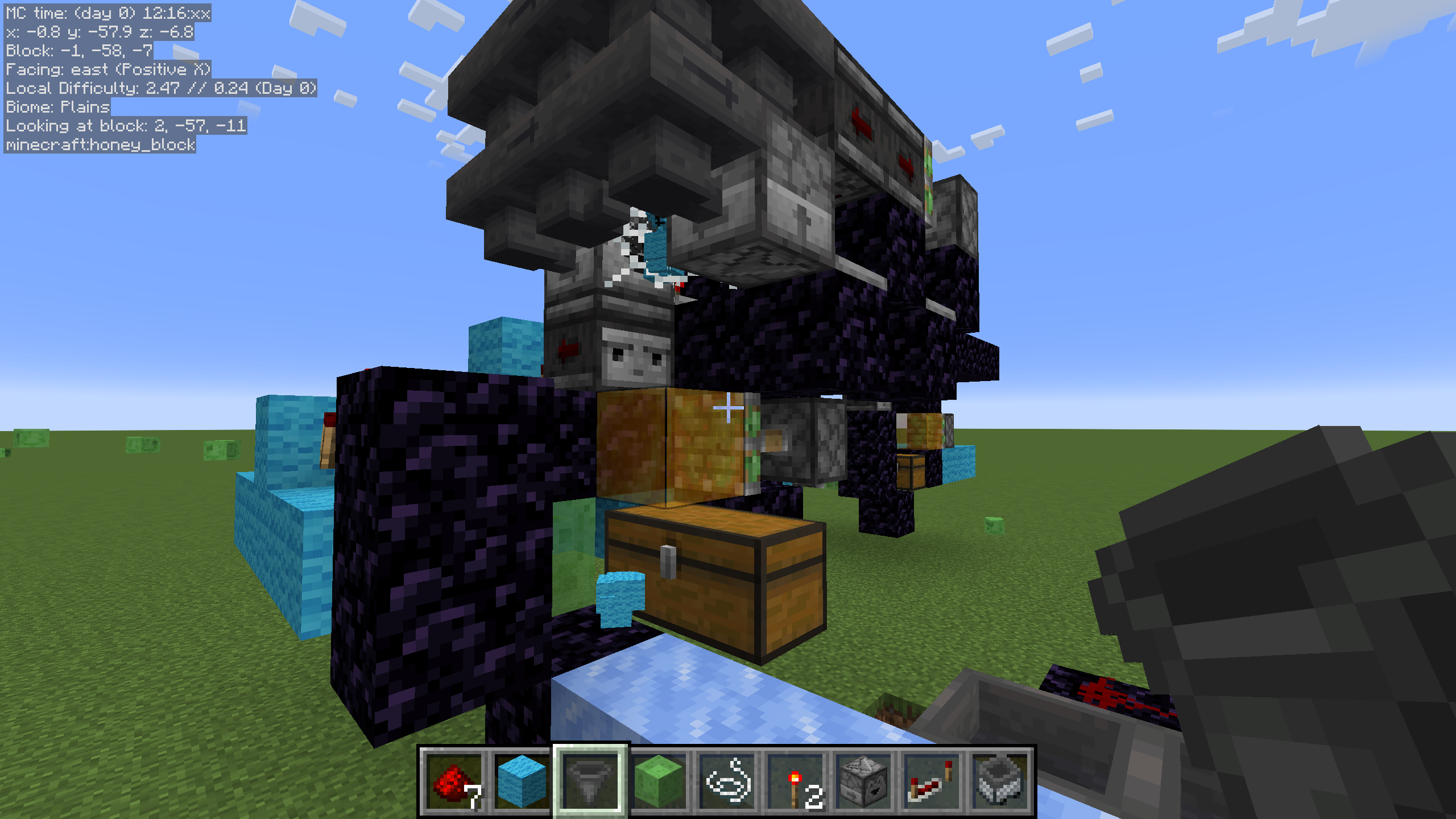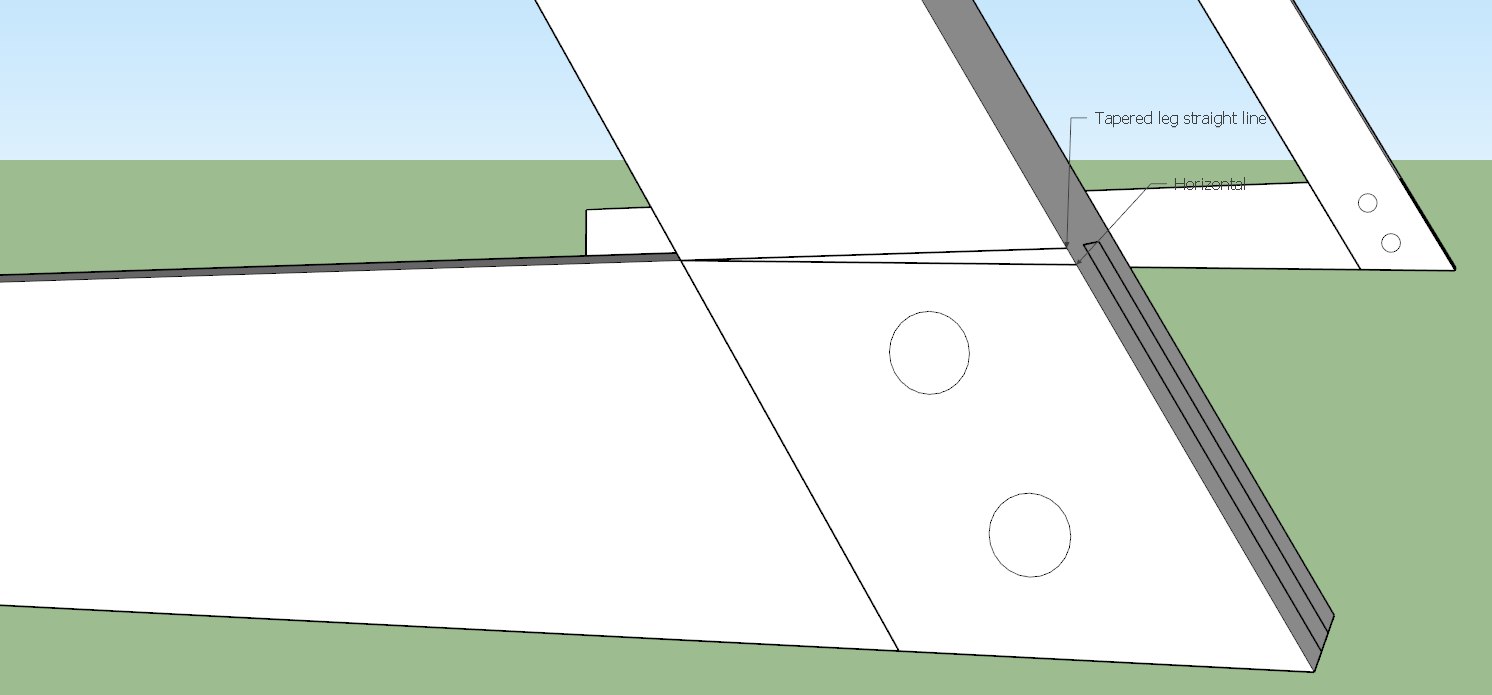nice! I see we both landed on very similar solutions to this. I'm going to implement your double-reversi loop to see how that plays out - it's the main difference to mine which keeps the secondary piston extended by default, and it retracts and pushes based on the pulse-extender decaying fully.
I like this, thanks for sharing!
OK, so here's the update. thanks to all the suggestions - I combined a few ideas, and came up with the following solution.
The observer triggers as items drop, this does two things at once:
- Drives a pulse extender which immediately retracts the secondary piston
- Pulses the primary piston after a short delay to push the items into the space that the secondary piston just made
As the clock decays fully the secondary piston fires and pushes the items.
An added bonus here is spam protection - so if items drop consecutively more quickly than the clock decays, it simply resets the clock so you don't get pistons firing together, or too quickly. This way nothing ever ends up on the top of the slime/honey blocks. I've added a front-side view for those curious as well.
Thanks for all the help and tips!


ok, I think I see how your system works now - I moved the dropper so it drops on the right spot and I now see the pistons firing regularly as expected. It does get a little messy with the speeds of them firing however I really like the idea so thanks for sharing.
I tried to implement this, however my right hand side piston stays extended for the duration of the pulse extender rather than firing and retracting like the left hand side one does. Not sure if I am missing something in the pic that I cannot see. I also wasn't able to figure out what you're doing with the dropper - seems like it's on top of the observer for some reason and the clock coming out of it doesn't do anything?
that's a novel approach, thanks for this - I am going to test it alongside my current version based off @authorinthedark@lemmy.sdf.org 's suggestion. Will come back with findings, thanks!
ohh yes, I like this idea, lemme have a crack at it, tnx! (I suck at redstone lol!)
wow, I re-read what I wrote originally - that was some terrible work! Hopefully much clearer now!
oh shoot! Good catch, I will edit the main post.

I am trying to get two pistons to synch their pulses for an item sorter (nether).
In the attached pic:
- Observer which has a string in front of it (far side) that sees items drop down out of a cobweb, it pulses the redstone to start the pistons
- The primary piston (#2) that pushes the items a block over towards the secondary piston (#3)
- The Secondary piston (#3) that pushes the items along the ice path.
The redstone and repeaters are currently set up so that the observer pulse pushes the primary piston first, then after a short delay pushes the secondary piston.
What I am trying to do is prevent the primary piston from extending while the secondary is active. What's happening is every now and again due to timing of items dropping past the string, the secondary piston is extended and the primary piston pulses pushing items onto the top of the extended slime block attached to the secondary piston, vs. those items dropping into the empty space while it's withdrawn.
Any help appreciated!
 Obligatory Princess Bride
Obligatory Princess Bride
Hey folks, throwing this out for ideas. I have - like many FOSS users from what I have researched - a Logitech G13 gaming keyboard. I love this thing - it's awesome, however it doesn't work in Linux.
There have been a few attempts in the past to make it work with a user-space driver, here and here. I can't even get those to compile and run on a modern Fedora instance. That's more a statement about me than anything else I think.
All said, I would like to set up a bounty to crowdfund the creation of a Kernel driver that can get submitted, as well as a GUI/CLI configuration app.
The thing is, I have no idea where to start except here! (The logitech community is empty) So, throw your ideas down, and shout-out if you're a G13 owner too!
#logitech #g13
Yes you can access Windows shares directly and play the media from there with no issues. I do it all the time.
I have a newer Zenbook and can confirm when I first got it, and wiped windows to put Ubuntu on it, audio didn't work from the speakers. Headphones worked just fine. There's a blog from some Asus dev community documenting the issues and resolution. I'm on mobile right now and can't find it. I can confirm it was addressed on Fedora a few kernel releases back though and that all is well. I'll post the blog link shortly. Per post above please provide your model number.
Edit: typos
Yes that is the hammer setting on your drill. The next setting is for screwing things in with no clutch release (it will keep rotating while the button is depressed), and it appears you have a series of numbers next which are the clutch settings. These will apply different amounts of screwing pressure before the clutch disengages. Good for when you don't want to over tighten it strip screws.
Unless it used something applicable in its training maybe?
Have you tried leveraging a LLM ai with prompts matching your needs? I've heard it can be quite effective, especially for someone with some programming background. E.g. "write me a python script that..."
Your napkin math is good though. Excellent points thank you!
Do you find the sound of rain and distant thunder relaxing? If so there are plenty of recordings on YouTube and YT music that are hours long and not loops. Search for keywords with "rain forest".
Thanks for the input. To simplify we're going with straight edges (I think it'll look classier too) and I am going to put some dowels in for a bit of additional joinery strength. See pics attached for some drawings. Also I think technically this is just an angled bridle joint, not a half-lap bridle joint.
Now I have a further Q. And that is "how does one cut the inside of the outer(!!) bridle, on an angle to accurately match the taper?" (see the triangle with text labels on the drawing). The offset from horizontal is about 2.5 degrees due to the tapered nature of the horizontal legs.

Hey WW community. Exactly as the title says - I am making some work tables for my kids. They'll be used for homework, laptops, etc. And they're kids, so one can guarantee a little bit of abuse.
They're designing them, and the "z leg" is all the rage apparently - I am in the process of designing these in sketchup, and wanted to get some input/ideas on how to make these really strong. I obviously cannot make them out of a single piece of wood, so there will be some joins, probably on the apex points. Oh and the designs currently require the apex points of the Z to be rounded ....
I'm considering using half-lap bridle joints, making the Z's angular, then routing the curves into them.
Input, advice, links to designs welcome!
+1 Put it in a USB3 device and you've got a smoking fast boot setup for as many OSs as you can shake a stick at. Great tool.